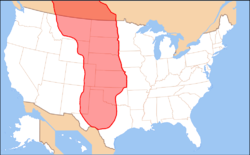Although tracts of fertile land considerably extensive are occasionally to be met with, yet the scarcity of wood and water, almost uniformly prevalent, will prove an insuperable obstacle in the way of settling the country. Edwin James in 1823
WOOO HOOOOOO! It's time for a road trip......
We begin our current adventure in Pueblo, Colorado. According to the official Colorado vacation guide Pueblo was once "a rough-and-tumble mining town inhabited by cowboys, gold-seekers and infamous ruffians like Wild Bill Hickock and Buffalo Bill Cody."
Modern day Pueblo is an up and coming city with many great amenities such as the Union Avenue Historic District, Historic Arkansas River Project, Lake Pueblo State Park, and Whitewater Park. We also have The Buell Children's Museum and the Pueblo Weisbrod Aircraft Museum.
The Pueblo Zoo is located within City Park which also has a kiddie park with rides for toddlers to adults that includes an historic carousel that is open every evening during the summer months.
We are in the heart of green chile country.....Livability.com named Pueblo a top-10 Surprising Food City, in part because of those wonderful roasted green chiles. For a special Pueblo treat try a "slopper."
This area is commonly known as the High Plains Desert and the region remains one of the least populated areas in the country.
We begin our current adventure in Pueblo, Colorado. According to the official Colorado vacation guide Pueblo was once "a rough-and-tumble mining town inhabited by cowboys, gold-seekers and infamous ruffians like Wild Bill Hickock and Buffalo Bill Cody."
Modern day Pueblo is an up and coming city with many great amenities such as the Union Avenue Historic District, Historic Arkansas River Project, Lake Pueblo State Park, and Whitewater Park. We also have The Buell Children's Museum and the Pueblo Weisbrod Aircraft Museum.
The Pueblo Zoo is located within City Park which also has a kiddie park with rides for toddlers to adults that includes an historic carousel that is open every evening during the summer months.
We are in the heart of green chile country.....Livability.com named Pueblo a top-10 Surprising Food City, in part because of those wonderful roasted green chiles. For a special Pueblo treat try a "slopper."
This area is commonly known as the High Plains Desert and the region remains one of the least populated areas in the country.
This region lies basically in the middle of the country and ranges from 1600 feet above sea level at the eastern edge to over 7000 feet at the western edge where the High Plains Desert meets the Rockie Mountains.
The Nature Conservancy has designated this eco-region as the Central Shortgrass Prairie. As we leave Pueblo we head west toward Pueblo West and Canon City on Highway 50.
The landscape consists of arroyos, buttes and rocky outcrops against a typically blue sky. Because of the elevation and lack of vegetation, there are wide ranges and extremes in the daily temperatures. We are also beset with bouts of extreme weather, such as the occasional blizzard in the winter and the more common thunderstorms, complete with damaging winds and hail, in the summer. Just a small price to pay for the beauty of wide open spaces....
To the north we can see Pikes Peak and to the south the Sangre de Cristos fill the sky.
Overall, the Central Shortgrass Prairie is semi-arid and supports scrub vegetation such as blue sagebrush, rabbit brush, and cacti, along with the prairie grasses.
The area is home to the black tailed prairie dog which digs tunnels in the prairie that create homes for the burrowing owl, as well as plovers, cottontails, lizards and snakes. Early settlers called them barking squirrels and they are more closely related to squirrels than rats. They are highly intelligent and have a complex communication system we are just beginning to understand.
Jane Goodall wrote, "Nine different wildlife species depend on the prairie dog and their habitat for their survival. The prairie dog is a critical component to healthy North American grasslands." And I think they are just plain cute.
You can see the highlights of the entire trip to Las Vegas @ http://youtu.be/qC25gbWvt5w



No comments:
Post a Comment